

Volume 9 | Issue 2
Creative Director SARAH ORY
Design Editor
EMMA PETERSON
Video Editor
SAM RAO
Finance Coordinators
MAGGIE CLARK MAKENZIE KULCYZKI
Human Resources Coordinator MOLLY KENNEDY
Standford Lipsey Student Publications Building 420 Maynard St, Ann Arbor, MI 48109
MELINA SCHAEFER Editor-in-Chief SOPHIA GAJDJIS Publisher
Marketing Director APOORVA GAUTAM
Print Fashion Editors
ABBY RAPOPORT ANASTASIA HERNANDO
Digital Fashion Editor

MADISON PATEL
Events Coordinator SENA KADDURAH
Social Media Coordinators NEHA KOTAGIRI LAUREN ROSENBERG
Operations Director SOPHIA AFENDOULIS
Print Features Editor
BROOKLYN BLEVINS
Digital Features Editor JANICE KANG
Managing Photo Editor NOLAN LOPEZ
Public Relations Coordinators IZZY SAUNDERS KALI HIGHTOWER
Digital Content Editor
HELENA GROBEL
Design Team
Camille Andrew, Kai Huie, Kimi Lillios, Margaret Laakso, Rino Fujimoto, Sandy Chang, Mary Wurster, Liza Miller, Hannah Salameh, Nick Pippen, Kamryn Almasy
Fashion Team
Ben Michalsky, Dhruv Verma, Gigi Kalabat, Janae Dyas, Kelsea Chen, Olivia Mouradain, Peter Marcus, Sandy Chang, Sarah Dettling, Sophia Mckay, Elissa Li, George VanHaaften, Quincy Bowles, Linsey Wozniak, Sian Tian, Skye Thompson, Mia Lolo, Ava Wadle, Quri Kim, Peyton Benjamin, Minh Phan, Dana Gray, Darnell Perkins, Angela Li
Features Team
Ava Shapiro, Hannah Triester, Nadia Judge, Neha Kotagiri, Melissa Dash, Lucy Perrone, Jayde Emery, Tiara Partsch, Meera Kumar, Amina Cattaui, Natasha Martin, Catherine August, Sailor West, Dana Gray, Lynn Dang, Shelby Jenkins
Photography Team
Pearl Thianthai, Oliver Segal, Ebba Gurney, Hannah Anderson, Paulina Rajski, Taylor Pacis, Selena Sun, Margeaux Fortin, Vera Tikhonova, Tess Crowley, Alexander Kim, Korrin Dering, Lindsey Archibald, Alex Lam, Yueshan Jiang, Sam Rao, SinYu Deng, Jessica Cho, Maggie Kirkman
Videography Team
Coco DelVecchio, Samin Hassan, Eaman Ali, Hannah Hur, Riley Kisser, Sam Rao, Gianna Galette, Olivia Ortiz
Digital Content Team
Print Photo Editors
GABRIELLE MACK
SAM MCLEOD
Print Beauty Editor YOUMNA KHAN
Digital Photo Editor RILEY KISSER
Street Style Editors
SUREET SARAU ROSALIE COMTE
Benjamin Decker, Sonali Pai, Esther Murray, Jessica Cho, Sarafina Chea, Esther Murray, Jessica Cho, Sarafina Chea
Finance Team
Elle Donakowski, Suma Moolaveesala, Manvita Battepati, Rendie Zhang, Olivia Jabari
Human Resources Team
Sarah Lindenbach, Lily Watchel, Emma Lewry, Diya Nambiar
Public Relations Team
Harini Shanker, Brandon Cole, Katherine Lambert, Devin Vowels Ava Ben-David, Ava Ray, Samantha Wright
Events Team
Tara Nayak, Erin Segui, Shruti Patel, Tiara Blonshine, Paris Rodgers, Allie Cain, Lottie Winegarden
Social Media Team
Samedha Gorrai, Olivia Sun, Charlotte Foley, Hannah Ding, Aubrey Borschke, Camila Escobar, Ellie Ngassa, Aarya Padhye, Luiza Santos
Street Style Team
Alexa Rind, Jordyn Hardy, Jenna Frieberg, Xander Bower, Ernest Hawkes, Anika Mino cha, Ellie Ngassa, Nina Walker



LETTER FROM THE EDITORS 04 CONTOUR 06 TURN, TURN, TURN! 28 LIVING WITH THE PURPLE ROSE 26 DOING FAIR(L)Y GOOD 18 OASIS 15 DISUNITY 52 AGE OF REFLECTION 50 CULTIVATE 38 POST-GRAD ADAPTATIONS: A DEEP DIVE ON CITIES 34 EARTH REWIRED 20 CONFLUENCE 44
In the past, SHEI has been interested in the ways that mankind negatively affects the environment with overconsumption, exploitation of resources and unsustainable fashion cycles (these ideas have been discussed in particular in both Future of Fashion, Epiphany, and Death of Fashion). Terraform presents a new angle to this discussion by looking at the ways in which humans can interact with the environment in a healthy and inspiring way.
Terraform is defined as “transforming a place so that it can support life”. What does it look like to work in tandem with nature to create a space most conducive to the lives we want to live? Through a radically optimistic lens, some shoots explore ways in which we can synchronize our needs as humans with that which is naturally provided by the Earth. Cultivate, for example, depicts a form of farming that is respectful and reverent to nature. Aj Barberti, the model for this shoot, works on the campus farm (where these photos were taken). I believe these photos reflect his genuine engagement with the earth and are a testament to the relationship he has forged through cultivation, which is such a beautiful word that calls to mind mutual nurturing and love. The produce that’s grown with love and care on the
farm also lovingly nourishes those who consume its offerings.

Some content in this digital also turns to ways in which our environment shapes who we are and how we live our lives. Sailor West’s feature, Postgraduation Adaptation: a Deepdive on Cities explores the different personalities of the places people gather, bringing it close to home by looking specifically at post-graduation destinations for University of Michigan students. A testament to the power place exerts on how we see the world and ourselves, we understand that the human manipulation of the earth (by the establishment of a city, for example) creates a “world” of its own with its own rules and challenges.
The interaction between man and nature is a complicated one. In a lot of ways it’s easy to condemn human behavior for its destructive tendencies (and they should be condemned). But following this conversation can be one about how we can shape the earth and how we can allow ourselves to be shaped by the earth in order to create harmony and balance. This is a constant negotiation that requires us to ask questions and seek real answers, a couple of which you can find here.
Melina Schaefer Editor-In-Chief



Do we shape our surroundings, or do our surroundings shape us? Do we shape our surroundings because our surroundings shape us? Terraform naturally poses these questions of genesis, but it also decomposes them. Take the word itself—close your fingers around its two leafy stalks of morpheme, one in each hand, and extract them from the earth. Gently tug the word apart and disentangle its meshwork of roots. You’ll see that terraform is, quite literally, the coalescence of nature and nurture, effectively erasing the need for an either-or framework.
Scoop up the loosened earth that crumbles off the roots of the uprooted term and transfer it to a terracotta pot of your choice. Watch as the soil clumps together and takes the shape of its container—your environment. That container can be of any size or degree of concreteness and go by any number of names, from geographical area to childhood bedroom, from life stage to the inevitable passage of time. Transplant the altered soil to another receptacle, and you can observe the process reassuringly repeat.
In TERRAFORM, we examine the symbioses we share with our environments and celebrate our adaptability to change. The way soil remembers the shape of a pot it was housed in for some time but can always be reworked to fit a new one, in this issue we explore how our relationships with our surroundings shape who we are, who we have been, and who we can be.
Kang
 Features Editor
Features Editor


Janice
Digital
5
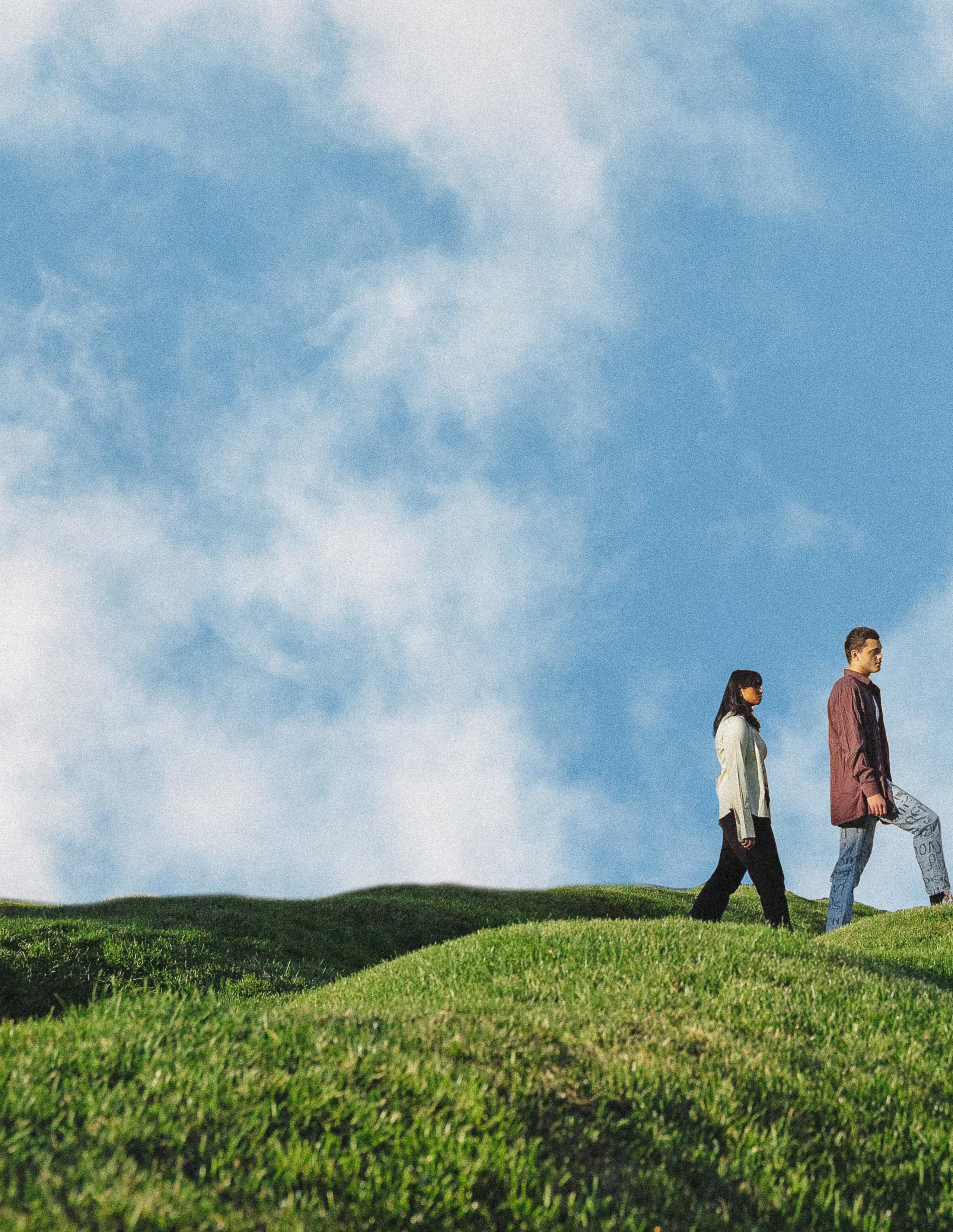
CON
N

OU
T
R 7


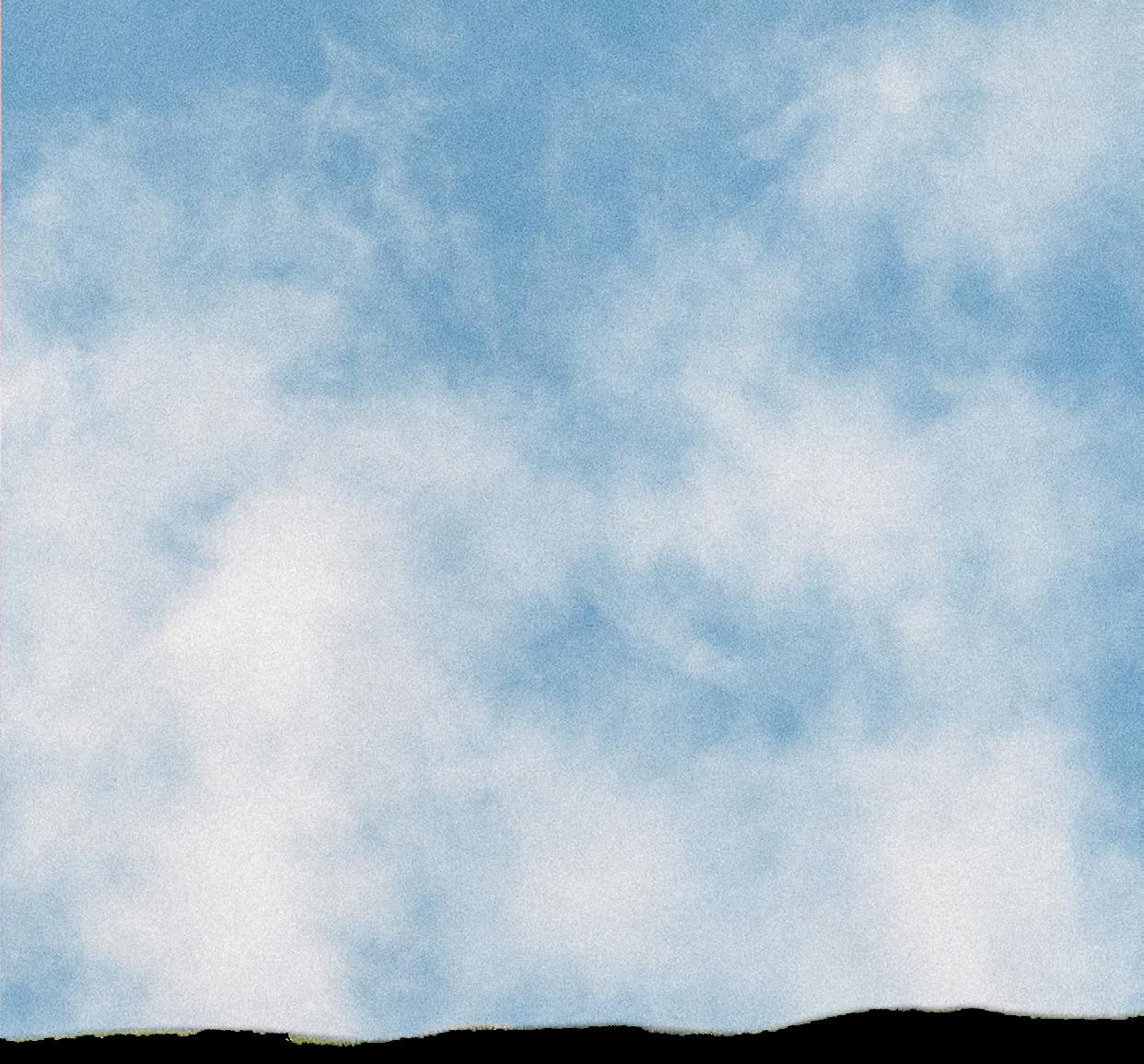


9

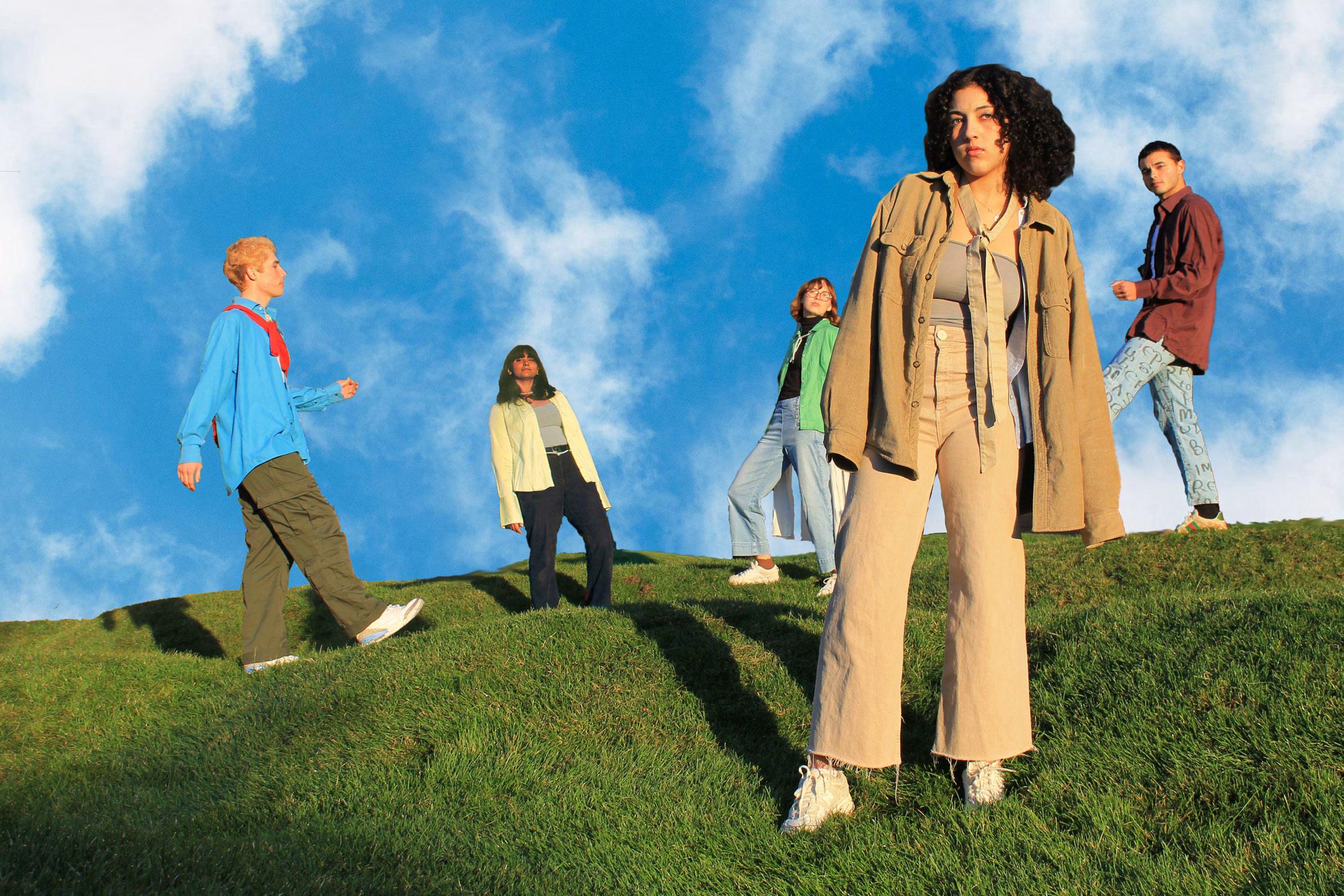
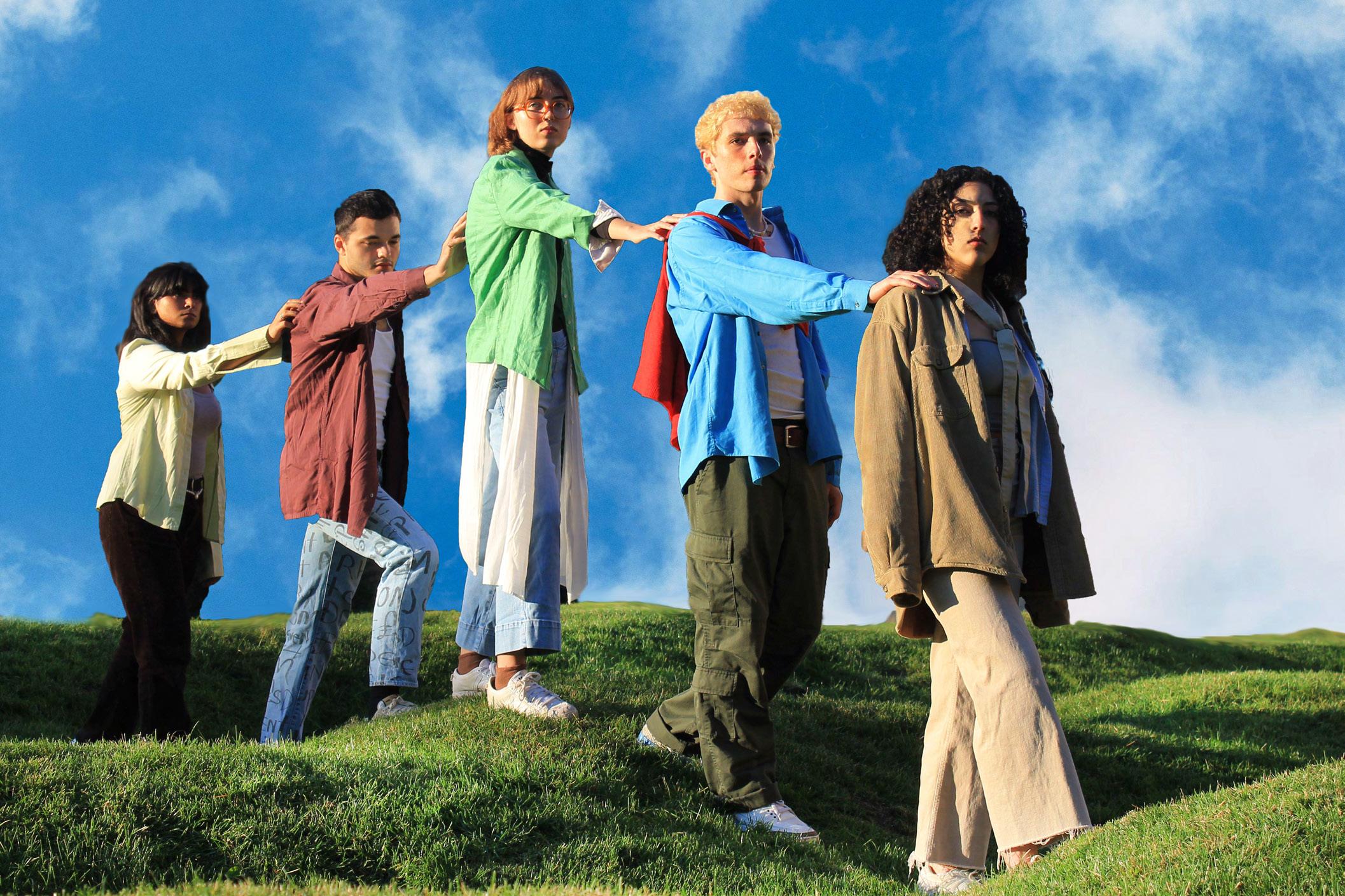


11

DIRECTOR ANGELA LI STYLISTS MADISON PATEL ANGELA LI PEYTON BENJAMIN PHOTOGRAPHERS SELENA SUN NOLAN LOPEZ VIDEOGRAPHER SAM RAO GRAPHIC DESIGNER MARY WURSTER MODELS RANI ATHWANI EMMA PERKINS OLIVER COPELAND GRACE FILBIN MARCUS HOH
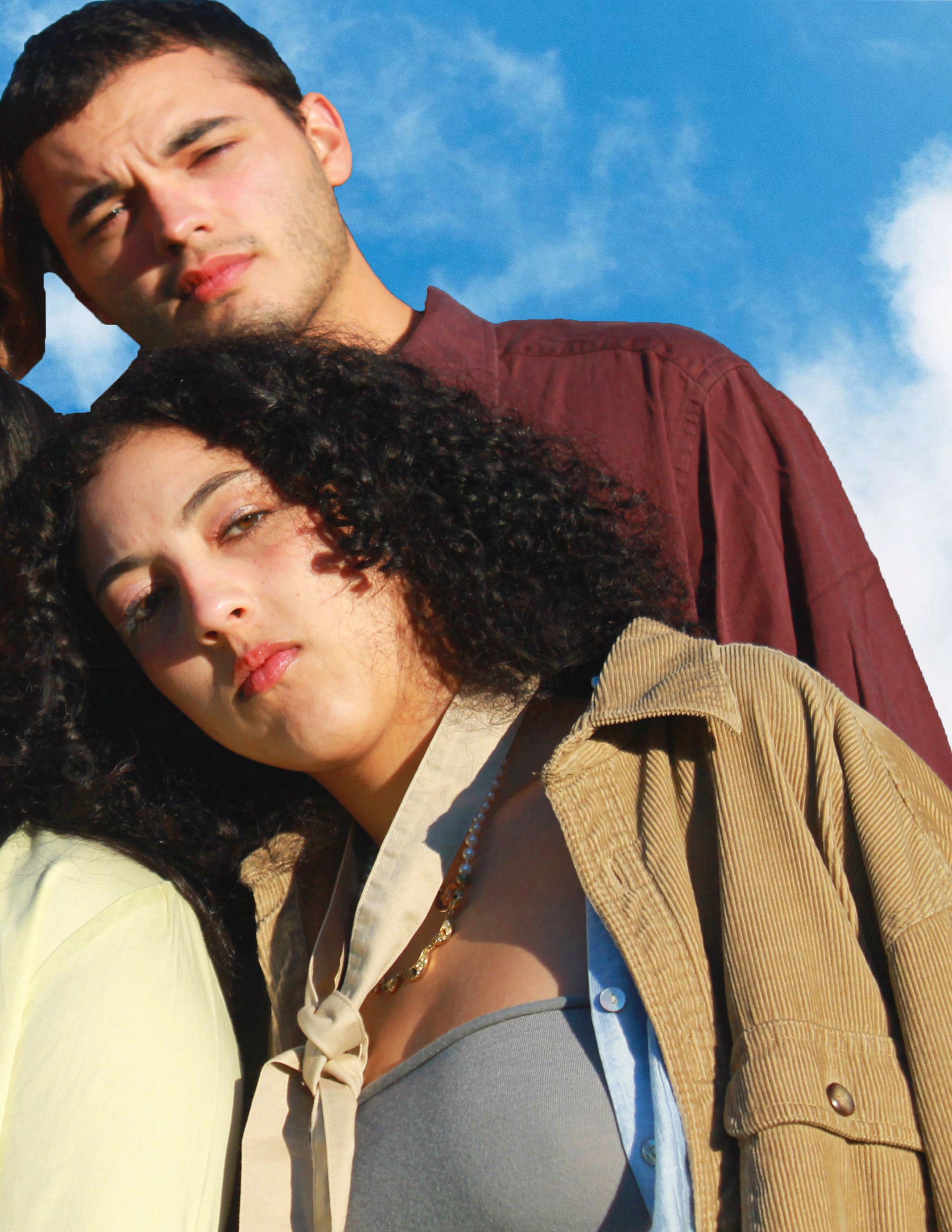
13








15


DIRECTOR JANAE DYAS STYLISTS JANAE DYAS PETER MARCUS QUINCY BOWLES PHOTOGRAPHERS YUESHAN JIANG EBBA GURNEY VIDEOGRAPHER EAMAN ALI GRAPHIC DESIGNER MARGARET LAAKSO MODEL SIN-YU DENG 17
D
OING FAIR(
The autumn full moon is bright enough she could give the tired street lamps a night off from their fluorescent duties. The slight chill in the wind pricks my skin when it blows and I’d objectively be more comfortable with the jacket I left at home after insisting it didn’t go with my outfit. The dark windows of the downtown high-rises peer down quietly on my friends and I as we jaunt down the worn cement sidewalk, headed to dinner plans made weeks in advance because it’s the only way we can sync our schedules. I’m only half-listening to their overlapping chatter about difficult GSIs or potential weekend plans because my eyes are tracing the bottom of the storefronts, looking for pieces of perfectly rounded, colorful wood hiding the lives of tiny magical beings. It’s been almost three years since I started this search but I’ve yet to manage to find even one. The secrets of the Ann Arbor Fairy Doors have yet to reveal themselves to me, to guide my wandering gaze to the doorsteps
of the delicate installations spread across the shops of downtown.
It’s always this time of year, when winter’s impatient approach turns the trees crimson and golden before stripping the trees bare, that my mind wanders back to the days of elementary school recess my dearest friends and I spent dreaming up our own fairy worlds, buying into the wonders of the make-believe, letting our imaginations run far away and never feeling any need to rope them back in. There was some untouchable magic in our innocence. As I’ve gotten older, it’s not that I wonder where that blessing of bliss went. Growing up pierced my skin from every direction and I could feel myself getting older with each day that began with the deafening screaming of my alarm clock and not my mom’s warm touch. I lost that bliss when I was handed my first planner and told I needed to pick a major when I barely knew myself. I’ve
FAIR(L )Y GOOD
hardly lived, how can you expect me to make any permanent choices? I could probably circle the day on the calendar my childhood left me. But it doesn’t stop me from spending my hours daydreaming about how to get back to those elementary afternoons.
Take me back to the towering, enchanted oak trees our younger selves would wrap our tiny arms around and proclaim them to be our cozy homes. Take me back to the fields of soft, green grass and glowing dandelions that we slipped behind our ears and deemed capable of imparting powers on each of us. Take me back to the soft-hearted whispers of the story we strung together, each day bigger and more spellbinding than the last. Or at least let me spend my days among the tiny fairies tucked away in the corners of Ann Arbor. I’m certain my days would be less mundane knowing what thoughts race through their miniature minds, gossiping about
the shoppers who bypass naive to their existence. I remain convinced that my nine-year-old self would have found every fairy house in Ann Arbor in a single day. Maybe by pure chance. But I think she’d be drawn to them by their inherent youthful magic. I envy every child who doesn’t have to stain their neck to search for the tiny doors.
Maybe I should bury my hands in the dirt until I can remember the way the fresh air used to feel in my lungs when I would spend hours jumping in the fall leaves and I could still count my age on my ten fingers. Maybe I should lie on my back in the grass until the ivy that snakes up the stones of my house warps into the kinds of pictures my younger mind would have found in the summer clouds.
Maybe the day I find my first fairy door, I’ll do just that.
 SHELBY JENKINS GRAPHIC DESIGNER
ANDREW
SHELBY JENKINS GRAPHIC DESIGNER
ANDREW
WRITER
CAMILLE
19
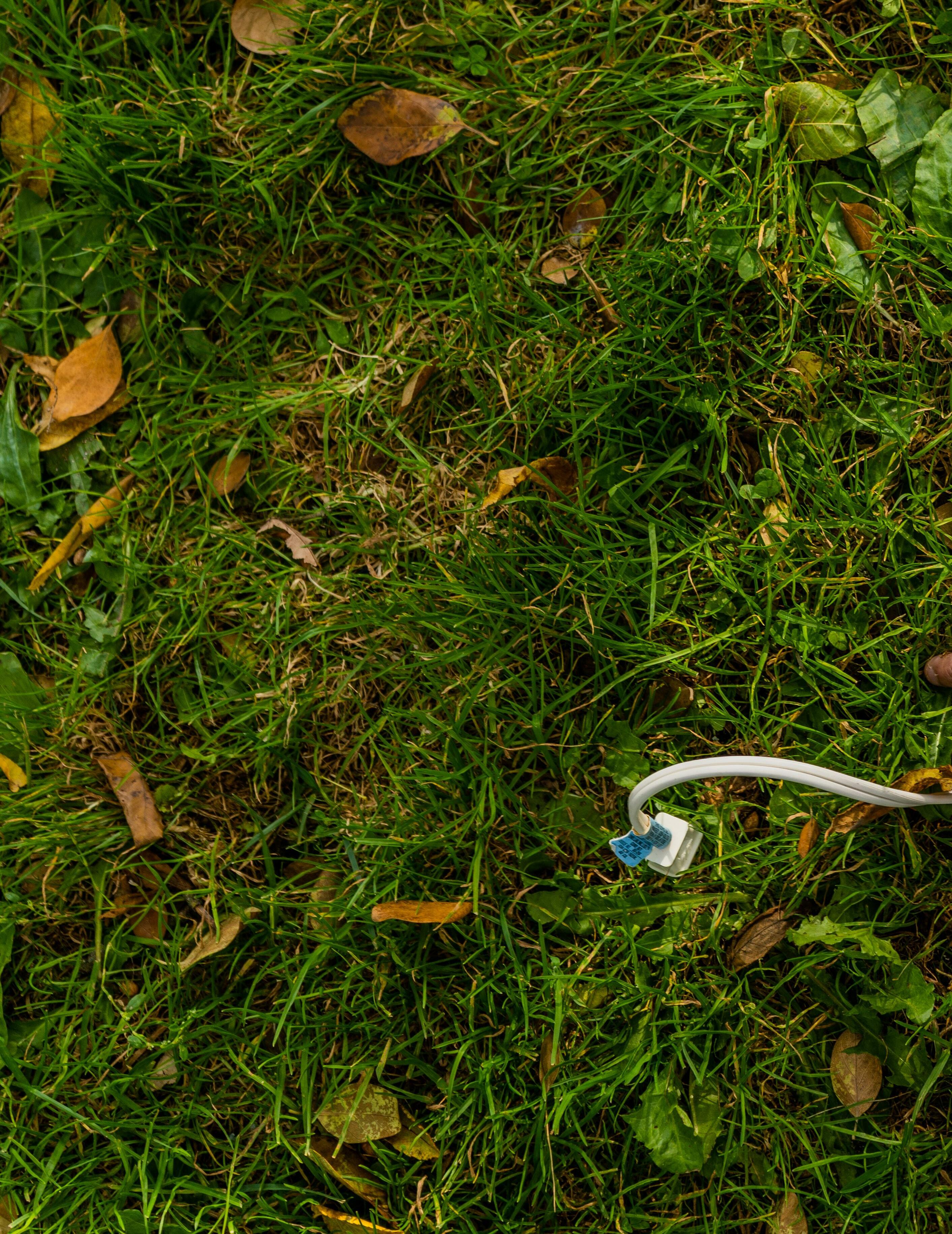
earth rewired

21



DIRECTOR LINSEY WOZNIAK STYLISTS SKYE THOMPSON KELSEA CHEN LINSEY WOZNIAK PHOTOGRAPHERS SAM RAO TAYLOR PACIS UDOKA NWANSI VIDEOGRAPHERS GIGI GALETTE GRAPHIC DESIGNERS EMMA PETERSON SANDY CHANG MODEL KUHOO BAIRWAL
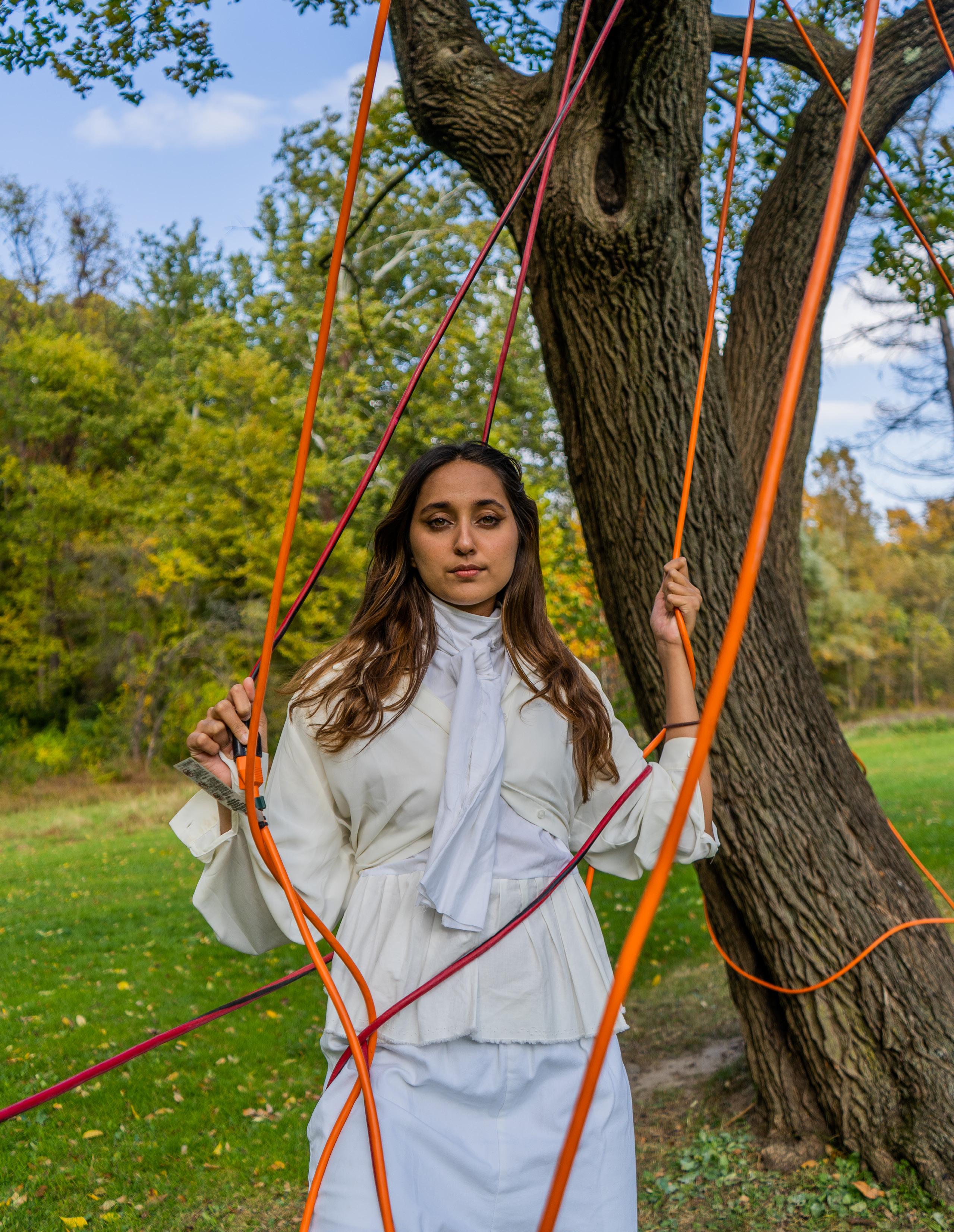

23

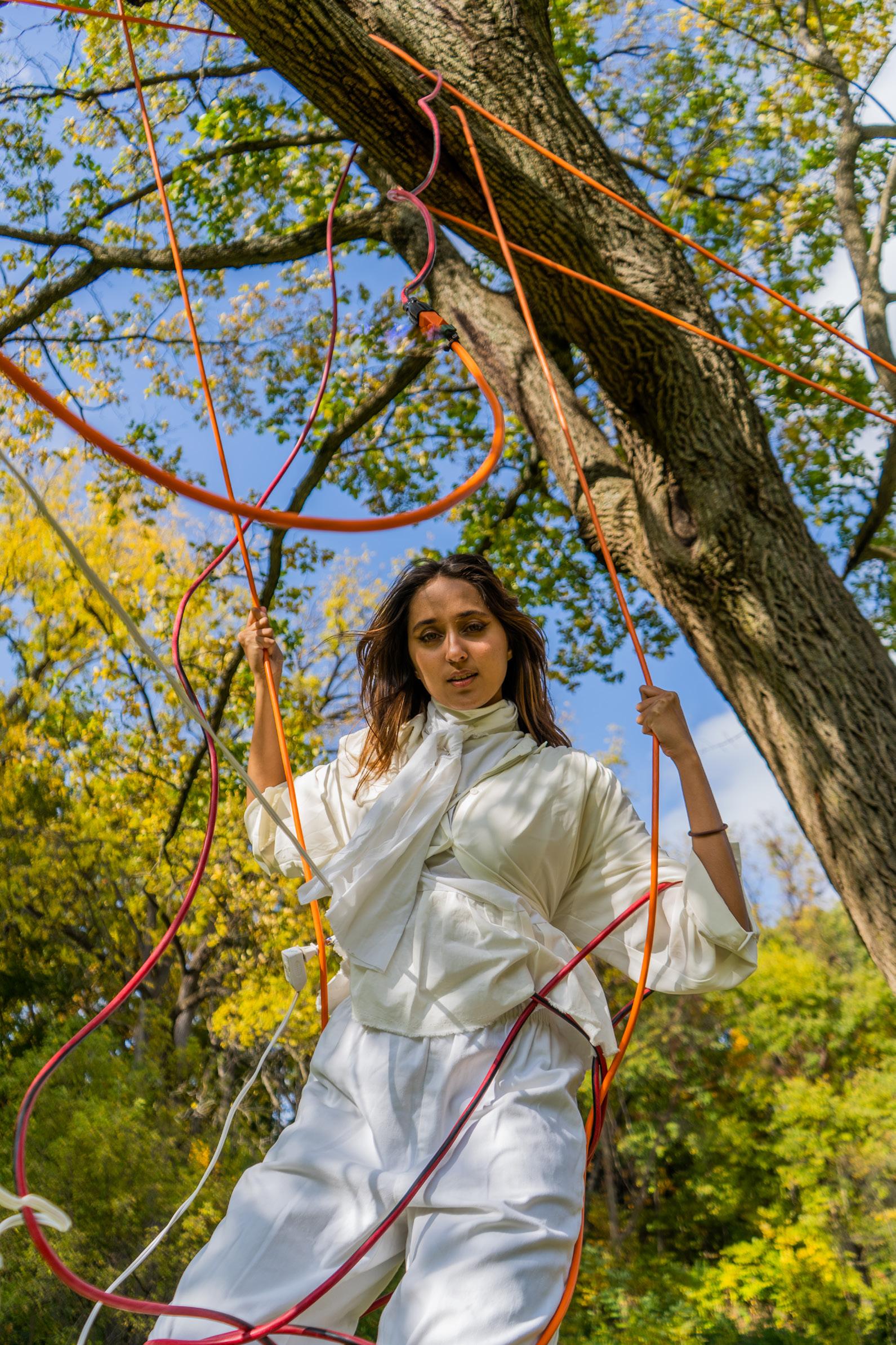




25
Excitement was palpable in my eyes when I was told that I would be allowed to pick the paint color of my bedroom walls; as a child with very little jurisdiction over all other aspects of my life, this opportunity was a rite of passage that evoked restless anticipation and eagerness— the specific childhood eagerness that is usually only summoned on birthdays and holidays. While there was much to consider, such as choosing a color to match the furniture in my room and ensuring the visual appeal of my selection, my overarching goal was establishing an atmosphere that matched how I wanted to feel in my room: inquisitive, warmhearted, enthusiastic, like a young princess bouncing around her palace.
I remember browsing through the options, hoping to discover a color that paralleled my childhood curiosity and ambition. My eyes jumped from shades of intense pinks to bright purples, until I found them fixated on a light lilac shade labeled Purple Rose. I closed my eyes, imagining my bedroom with Purple Rose walls. I saw more than just the color, though—my room awash with this beautiful shade of purple, I saw myself as the princess I longed to be. Draped in a shiny violet dress that resembled those of Disney princesses, I approached the world with captivating bright eyes and a beaming smile. My insatiable appetite for knowledge, new
experiences, and wisdom led me down winding paths rich with opportunities, waiting patiently for my arrival. Strong and kind, I was ready to take on the world and its challenges. The Purple Rose paint evoked these majestic feelings that I longed for, perfectly encompassing my vision of the future.
Almost ten years later, I still woke up to Purple Rose walls in the mornings. But mere months after the onset of life in a pandemic and my first encounter with real, agonizing grief, I began to resent the color on my walls. It no longer symbolized my reign as princess; instead, all I could see was my depression, anxiety, and grief in its physical manifestation. The Purple Rose that I once loved morphed into the despair from being unable to will myself to leave my bed, the anguish from debilitating academic stress, and the heavy burden of grief tainting every thought that crossed my mind. My bright eyes dimmed, my beaming smile dragged down into a permanent frown, and my beautiful princess dress turned into a pair of pajamas worn a few days too long. The winding paths that used to entice me turned out to be an illusion that all led to the same miserable, lonely outcome that is death. I felt physically and mentally weak, unable to take on basic self-care, let alone the world and its challenges. Piles of clutter started dominating my floorspace, only contributing
WRITER CATHERINE AUGUST GRAPHIC DESIGNER RINO FUJIMOTO
to the feelings of hopelessness floating around in my headspace. I was drowning in the very environment that was supposed to provide comfort.
Recognizing that I was at my breaking point, my mother made the welcome suggestion that we remodel my room, starting with repainting. I found myself eagerly browsing through shades just as I did when I was a kid; this time, however, I noticed my eyes gravitating only towards shades of soft green. My gaze landed on a shade labeled Paradise Green and my eyes instinctively closed to let my mind paint the picture, a scene more serene than I had with the Purple Rose as a child. A wide river flows through a forest permeated with lush greenery. I step into the shallow river and let the green-tinted water run against my legs. The harsh cold jolts me out of my anxious thoughts, and the thousands of green leaves swaying in the gentle breeze usher my brain out of its dark state and back into reality. I realize that Paradise Green brings me back to the present by washing away the pain that has been holding me back, rather than teleporting me into an alternate existence like the Purple Rose did, but it seems to be just what I need. This sense of tranquility and composure is something I have not felt in a long time, and I know Paradise Green will become my mental paradise.
The physical process of painting my room reinforced these feelings of peacefulness. With each brushstroke, I painted over the pain that had been smothering me in my old environment. I acknowledged every inch of Purple Rose paint on my wall, staring my anxiety, depression, and grief in the face and accepting them for what they are. But with each brushstroke, I also solidified my intention to focus on healthy behaviors that would facilitate personal growth and improve my well-being. The painting process illuminated the idea that it is possible to live with the Purple Rose without allowing it to suffocate me; the Purple Rose will always be on my walls behind the coat of Paradise Green, but I have taken away its jurisdiction to control me. By refusing my pain the opportunity to exist in my physical environment, I have adapted more into the at-ease person I want to be. Although I still struggle at times even after altering my space to be more conducive to my well-being, with the added aid of other treatment efforts, I feel more at home in my environment. With each passing day, I grow more conscious that one’s environment is reflecti of and connected to their state of mind. Undergoing change and adaptations can be difficult, but necessary to learn to live with, not under, the Purple Rose.
27
TURN, TURN, TURN!
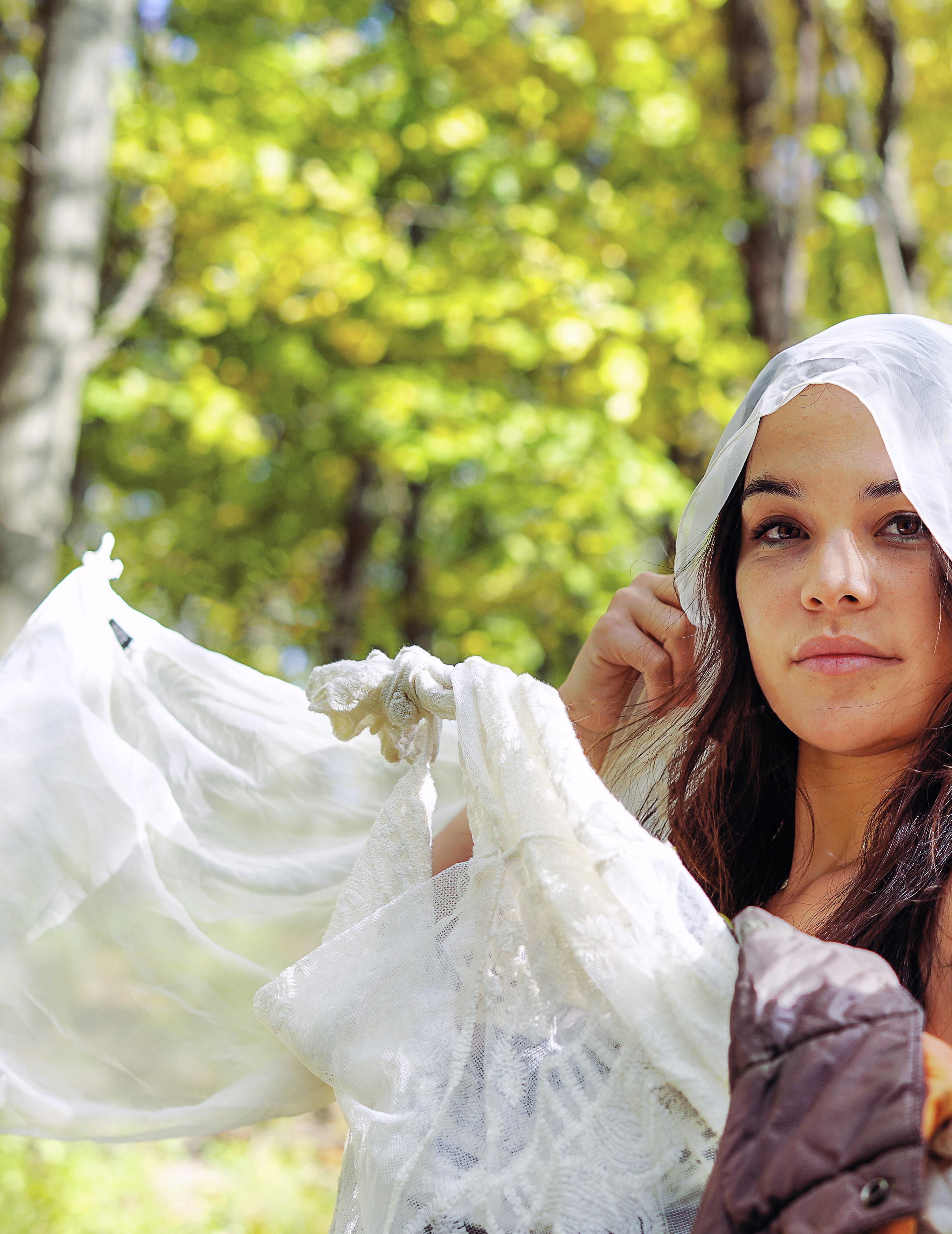

DIRECTOR BEN MICHALSKY STYLISTS DARNELL PERKINS QURI KIM PHOTOGRAPHERS LINDSEY ARCHIBALD PEARL THIANTHA ALEXANDER KIM VIDEOGRAPHER COCO DELVECCHIO GRAPHIC DESIGNER NICK PIPPEN MODEL DYLAN CHEN 29

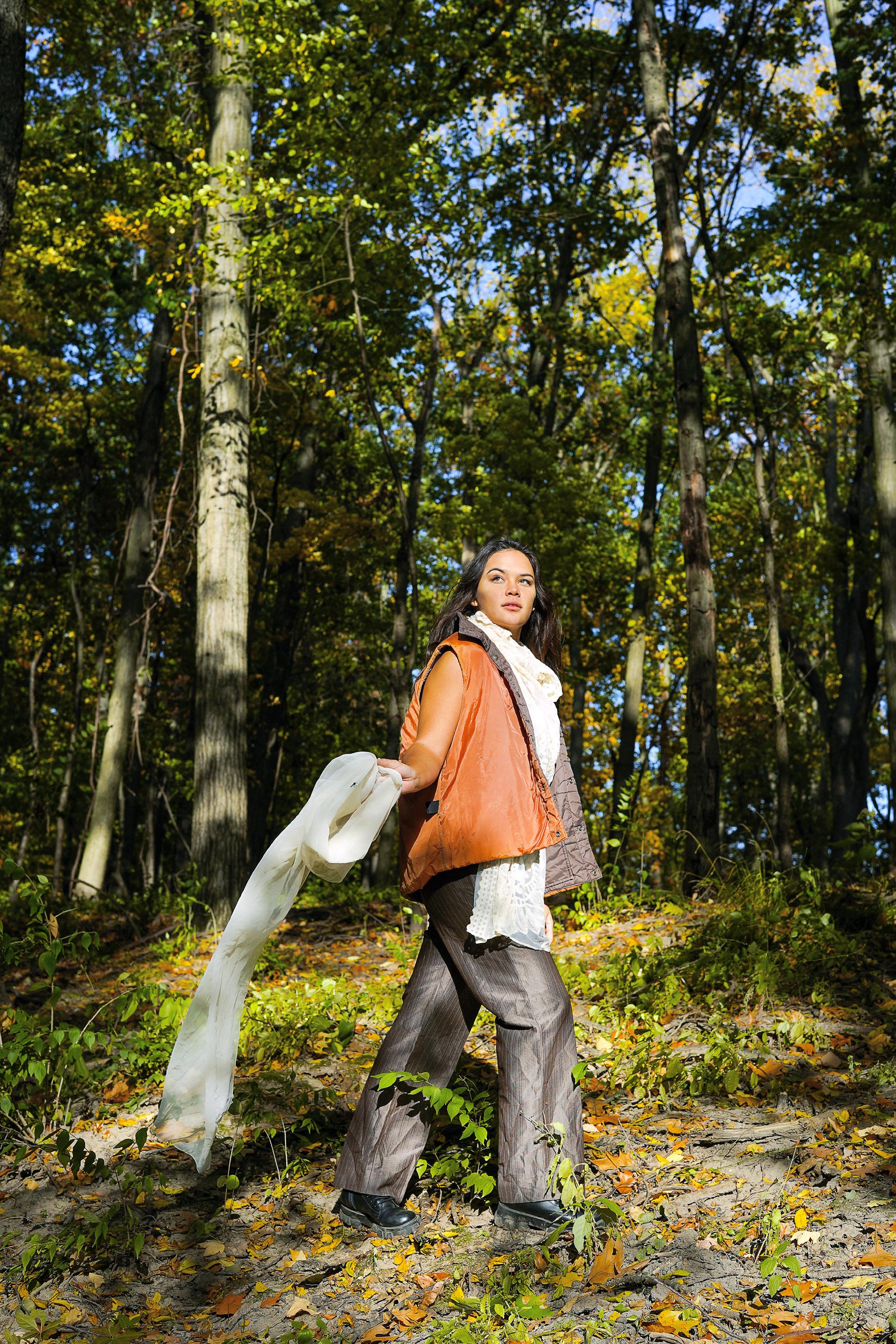

31







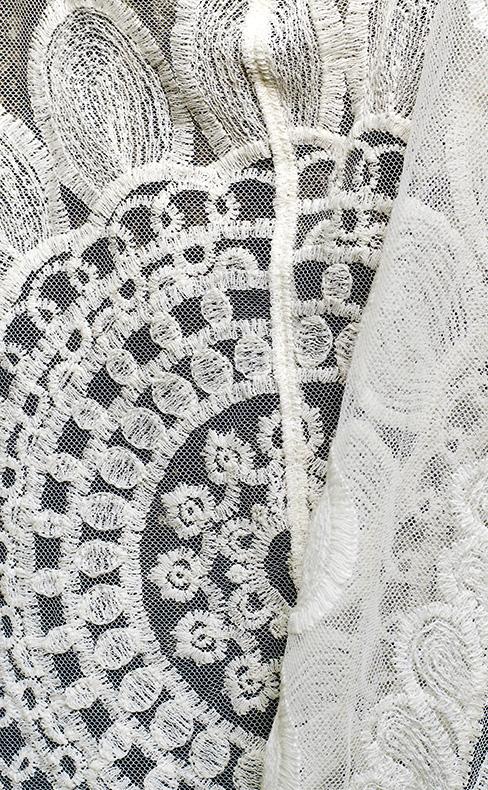

33
WRITER SAILOR WEST
As young adults, our environments are constantly changing. We are in a continuous state of movement: from our hometowns, to Ann Arbor, within Ann Arbor, then onto the next city. Those who adapt to their evolving environments and embrace inevitable change are the ones who will find peace amidst the chaos.
In the blink of an eye, college is over and we are dumped in a new place with a 10-year span of confusion consisting of the ages between 20 and 30. The cities we end up in are the setting and stage of our next chapter.
It is with that understanding that I will highlight the most popular postgraduate cities and what recent alumni have to say about adjusting to their new environments within each.

 GRAPHIC DESIGNER KAI HUIE
GRAPHIC DESIGNER KAI HUIE
New York City.
New York is arguably the most romanticized city in the US. If you’re like me, you buy into all of it. The dreams that echo throughout the streets, the romance running through the veins of Central Park, and the best street food money can buy. Living in New York has been a childhood dream of mine. What I didn’t consider when I was 12 was the high cost of living and the subtle feeling of loneliness when you are one Cheerio in a bulk box of 8.38 million. To understand postgrad life in New York, I sat down with Sarah Addo, who moved there after graduating in April 2022.
“New York scared me when I first moved here,” Sarah laughed while explaining her time transitioning. Despite initial nerves, Sarah’s adjustment to NYC was positive.

“The more overwhelming areas are the touristy spots.” She explained that her Hell’s Kitchen neighborhood provides her a smaller, more intimate subsection. “There are so many different neighborhoods, so there is a lot of traveling too. There are times when I will spend up to 40 minutes on the subway,” she noted.
When asked about her experience with costs, her response was immediate: “It’s ridiculous.” She explained that “Depending on what you like to do on the weekends, my biggest expense has been going out.” Sarah laughed, saying that it is difficult to find a drink under $14.
Sarah feels that New York is distinct from other postgrad cities. “In New York, there is something to do whenever you want. It feels alive and active.” Even with the high cost of living and lengthy commutes, Sarah does not plan to move anytime soon.
35
Chicago.
A quick LinkedIn search will prove that the Michigan-toChicago pipeline is real. Chicago seems to have it all—the hustle of a big city, close proximity to Ann Arbor, and a lower cost of living than New York. To learn more about adapting to Chicago life, I sat down with recent graduate turned Chicagoan, Olivia Katz.
The manageability of the city was Olivia’s main point of attraction. “I was able to integrate into a big and dynamic city while also having it feel more manageable and cleaner than New York City.”
Olivia is pleasantly surprised with the postgrad community in Chicago, calling it a “Big 10 melting pot” with designated bars for each school on football Saturdays. She also noticed the various ways to form a community. “My roommate joined an adult symphony band here and my other roommate has engaged with the Jewish community. I am joining the Chicago social club, which is an intramural sports league all throughout the city.”
“It’s a super affordable cost of living which was something that was very important,” Olivia shared. She explained that she prioritized eating well, enjoying good entertainment, and not spending her entire paycheck on rent. “I saw a Broadway show here for $40!” she exclaimed.
Olivia greatly appreciates that she hasn’t felt “competitiveness or pressure in Chicago about where you are working or what salary you have. It is a very lowkey and down to earth environment.”

Ann Arbor.
With the increased prominence of remote jobs comes flexibility with where recent graduates decide to live, making remaining in Ann Arbor a feasible option. Environments can change even when physical locations do not. To learn more about remote working in Ann Arbor, I spoke with Emelia Ratliff, a 2022 graduate.
In just six months, Emelia’s college town became her postgrad home. She admitted that the initial transition posed some challenges. “Recognizing that I wasn’t a part of the big campus community anymore, or at least that I had a different role in it was difficult.”
Taking on postgraduate life in Ann Arbor connected her with new communities. “Since I am still in the same place, I have been trying to strengthen relationships with people who are at the same stage of life as me in Ann Arbor.” Her choice to move to a new neighborhood within Ann Arbor was important. “Changing up my setting and moving outside of student heavy areas allowed me to grow into my professional self rather than just an extension of my student self.”
Emelia has discovered a new side of Ann Arbor since graduating. Emerging from the on-campus “bubble,” she realized that Ann Arbor has way more to offer than she ever knew, citing trips to the farmers market, off campus restaurants, and local entertainment.

When asked about her driving reasons for staying, she responded, “Familiarity. Since I wasn’t able to get community from my remote job, I chose to stay because I knew I would have a support system here.” Reflecting back, Emelia is satisfied with her choice. “My mental health is very important to me and I knew having to figure out a new support system amidst the transition would have been an unnecessary burden.”
Change is the only constant, especially with regards to the environments we find ourselves in. As a young person, it is critical to dynamically adapt to our changing environments with gratitude and excitement. College life is a blessing, but the opportunity to take on a new adventure, in whatever capacity that is, is equally exciting.
37

CULTIVATE
CULTIVATE
VERMA STYLISTS

DIRECTOR DHRUV
AVA WADLE MIA LOLO DHRUV VERMA PHOTOGRAPHERS RILEY KISSER OLIVER SEGAL ALEX LAM VIDEOGRAPHER SAMIN HASSAN GRAPHIC DESIGNER LIZA MILLER MODEL AJ BARBERI 39


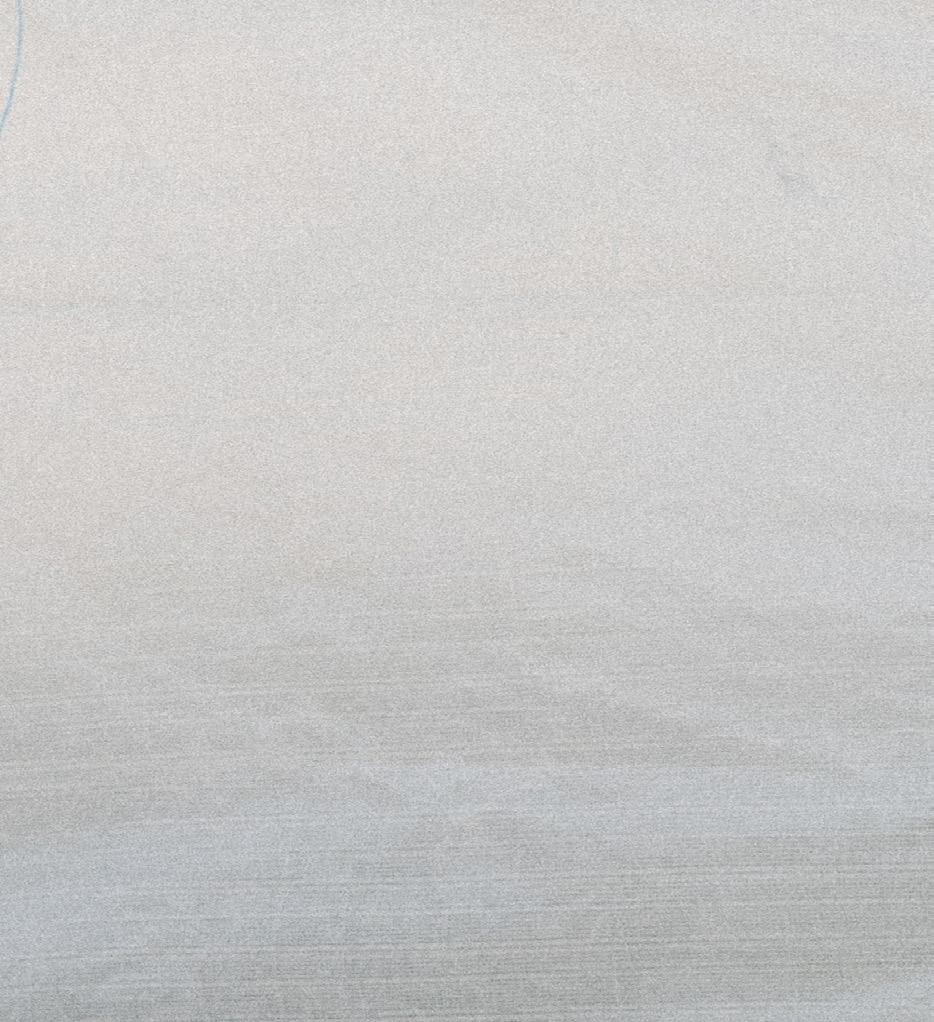




41



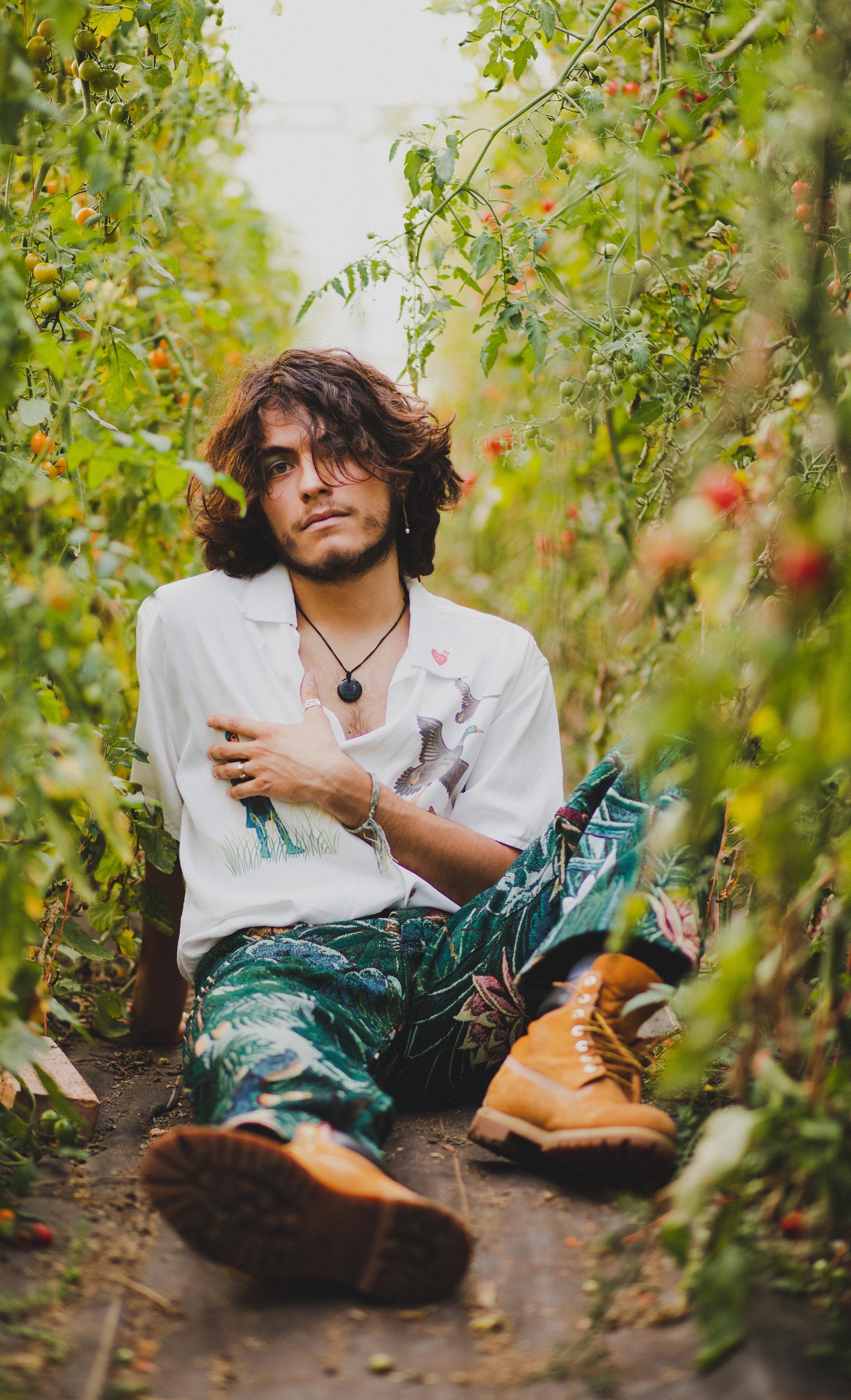


43


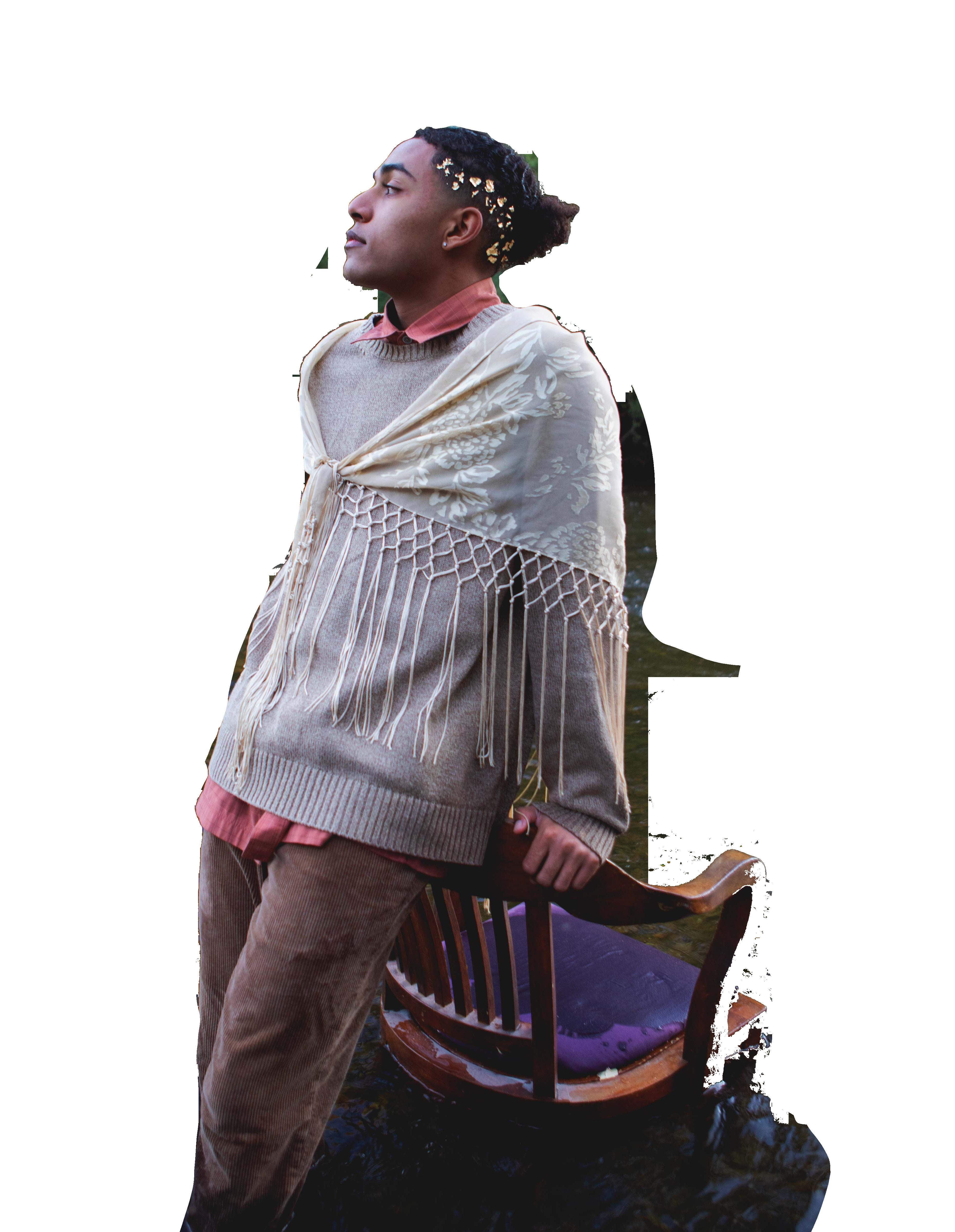



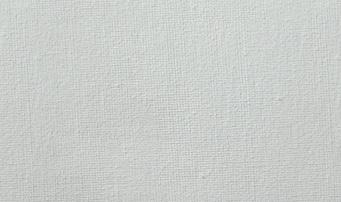
45



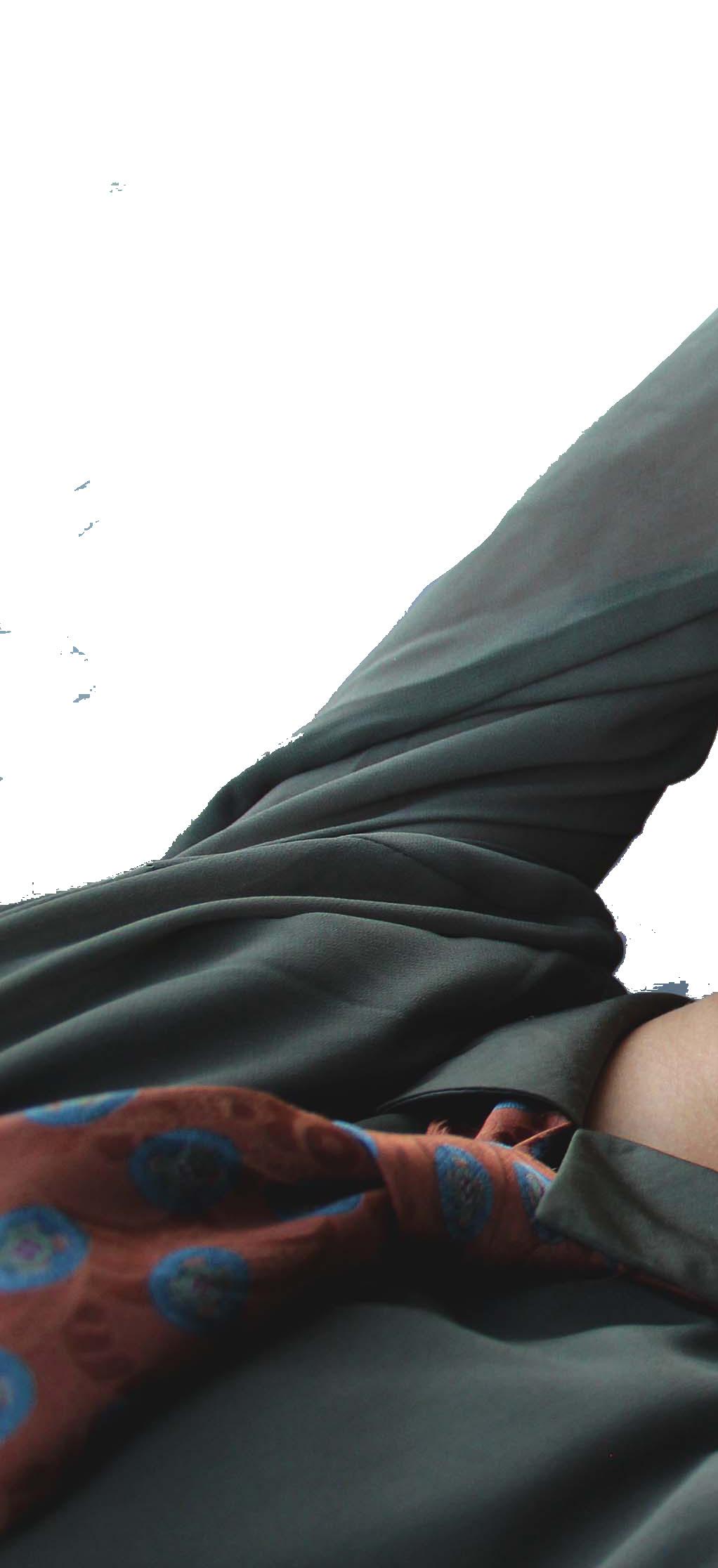

DIRECTOR DANA GRAY STYLISTS SANDY CHANG ELISSA LI PHOTOGRAPHERS MAGGIE KIRKMAN KORRIN DERING VIDEOGRAPHER OLIVIA ORTIZ GRAPHIC DESIGNER KAMRYN ALMASY MODELS NATALIE SMARCH MEERA JAGAN ALEX YEUNG JADAL LEON NAOMI RODRIGUEZ



47






49
A flower at its peak is in full bloom. Its petals unfurl, emitting a hypnotizing aroma, While its leaves extend, yearning for the sun's rays. But before insects can feed and the elements strike, Leaving marks upon its flesh, We are inclined to pick it.
We place it in a vase, A vacuum void of harsh winds and flooding rains. Thus, as the Earth’s dynamic climate fails to reach within these walls, We isolate it in its purest form. Perched on the windowsill, It graces the room with all its glory.
So we think, It’s been saved
Yet promptly after, it begins to wilt. Its petals start to shrivel at the edges. Once tender, now crisp. It loses its soft fragrance, its mesmerizing perfume. And even through the blurred reflection on the window, We can witness its imperfections deepen.

We saturate the vase with water and nutrients, Distance it from direct sunlight, Sustain a brisk temperature. Little by little, its petals perk up, Its soft scent faintly returns, A tranquil ambience ascends. So we think, It’s been saved.
Except, the effects of our efforts don’t last. It continues to wither, And its petals become brittle. Its aroma dissipates into thin air. It loses its radiance and turns dull, Lifeless.
But to our surprise, it doesn’t decay. Its once vibrant petals now sit discolored and dehydrated. Its hypnotic fragrance, now forever lost. Still, there's comfort and elegance in this fragile state. Light as a feather and stiff as a board, It remains intact, blemishes and all. Preserved in time, There’s beauty in its existence.

Our pulchritude peaks in our youth. Our smiles glisten, radiating a contagious warmth, While our skin glows, absorbing the air’s moisture. But as the sun beats down and life takes its course, Blemishing our exterior, We are disposed to halt it.
We encase ourselves in a bubble, A prison void of unexpected injuries and exploding emotions. Thus, as life’s adventures cease to affect us within our confines, We seclude ourselves from the world. Immersed in this desolate sanctuary, We’ve never looked more pristine. So we think, We’ve been spared.
But soon after, we begin to decline. Our skin starts to wrinkle at our features. Once supple, now inelastic. We lose our spark, our emotional vigor. And even through the vague reflection in the mirror, We can observe every flaw as though magnified.
We drown our skin in serums and moisturizers, Switch to retinoids and hydroxy acids, Slather on excessive SPF protection. Step by step, our skin re-energizes, Its elasticity returns, An illuminating hydration emerges. So we think, We’ve been spared.
Except, the effects of our efforts don’t last. We continue to age, And our skin grows lackluster. Its plumpness transforms into tenuousness. It loses its radiance and turns dull, Pallid.

But to our surprise, we aren’t disfigured. Our once succulent skin is now thin and parched. Its youthful glow, now truly lost. Yet, there’s liveliness and grace in this delicate state. Carrying the memory of every experience and emotion, We remain sound; wrinkles, scars, and all. Preserved in time, There’s beauty in our existence.
 LYNN DANG GRAPHIC DESIGNER HANNAH SALAMEH
LYNN DANG GRAPHIC DESIGNER HANNAH SALAMEH
WRITER
51

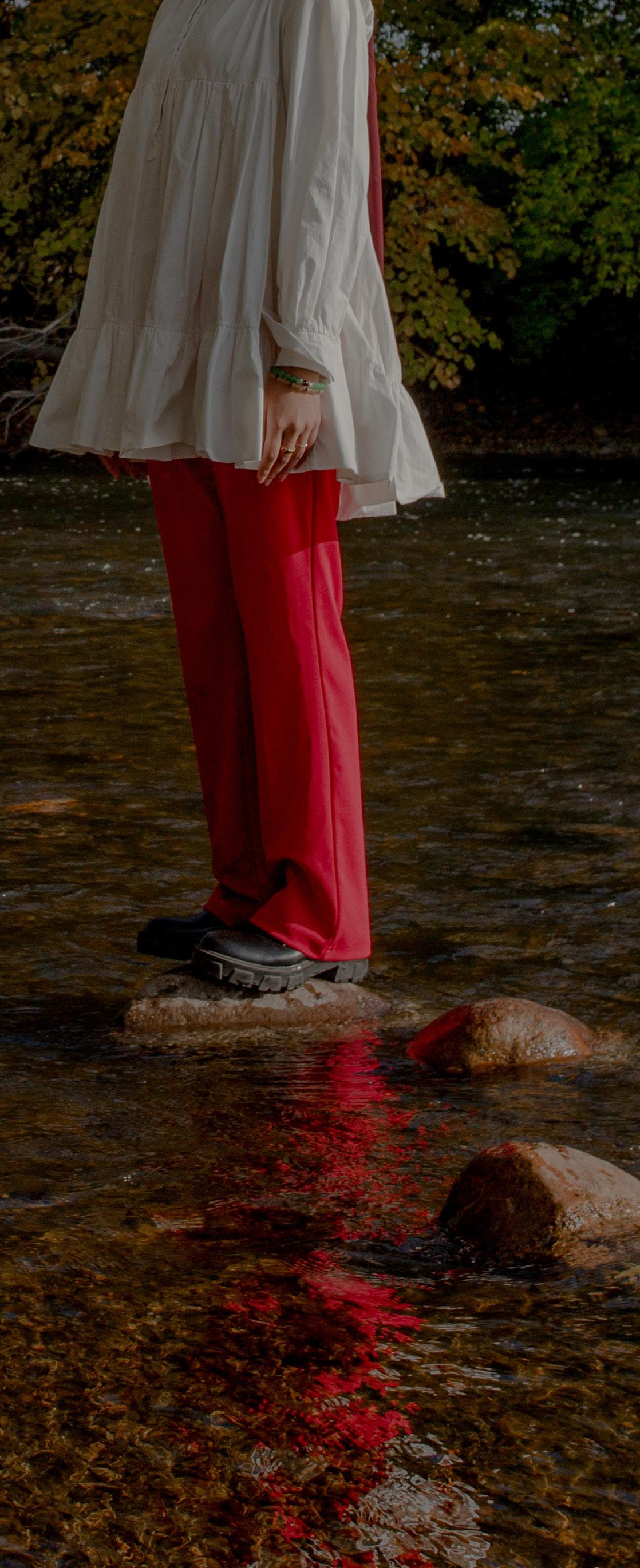
DIRECTOR SARAH DETTLING STYLISTS GEORGE VANHAAFTEN OLIVIA MOURAIAN PHOTOGRAPHERS JESSICA CHO HANNAH ANDERSON GRAPHIC DESIGNER KIMI LILLIOS MODELS ZAINAB AHMAD KATHERINE TOMASHEVSKY dis
unity


dis
53



55
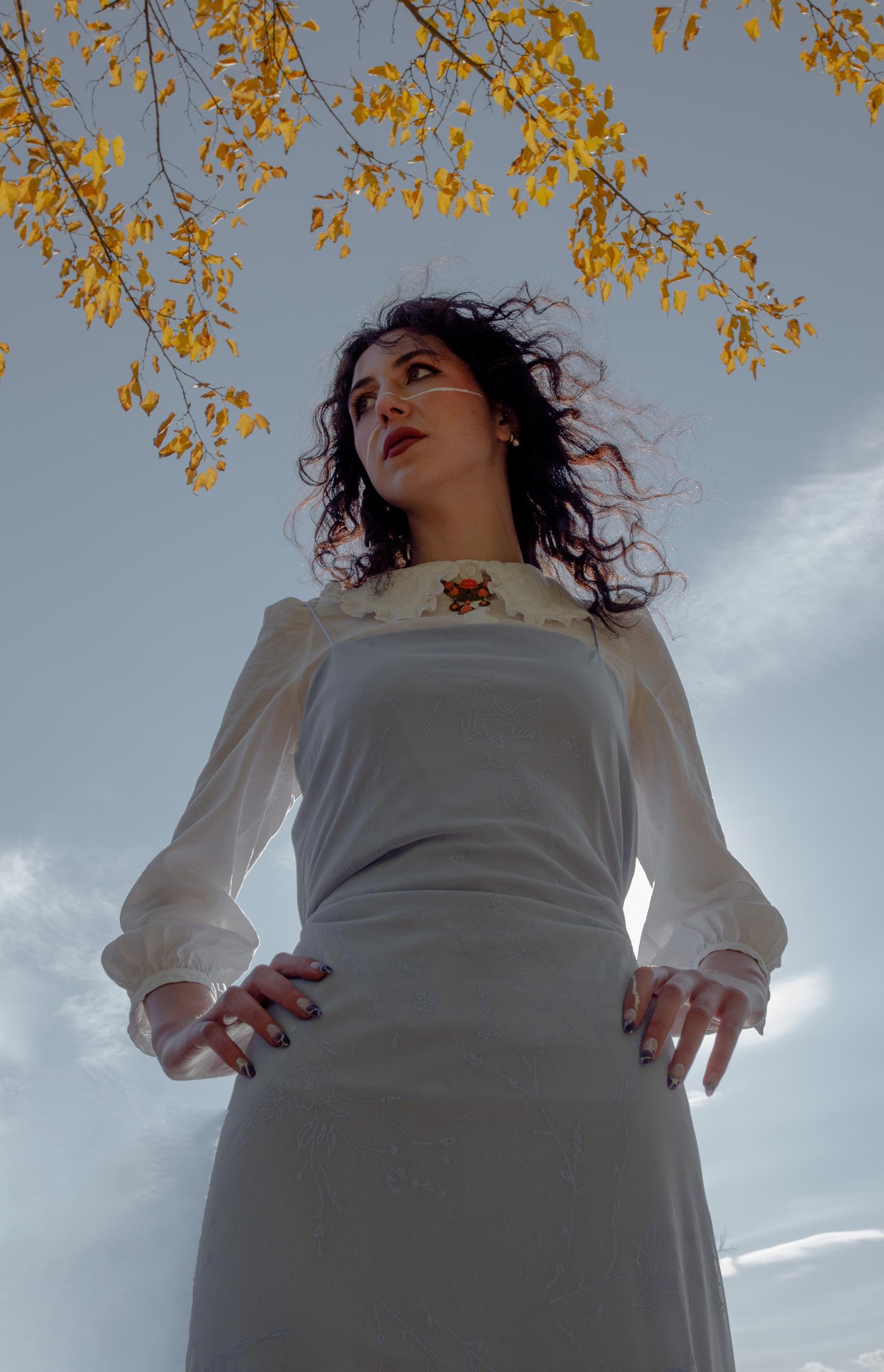
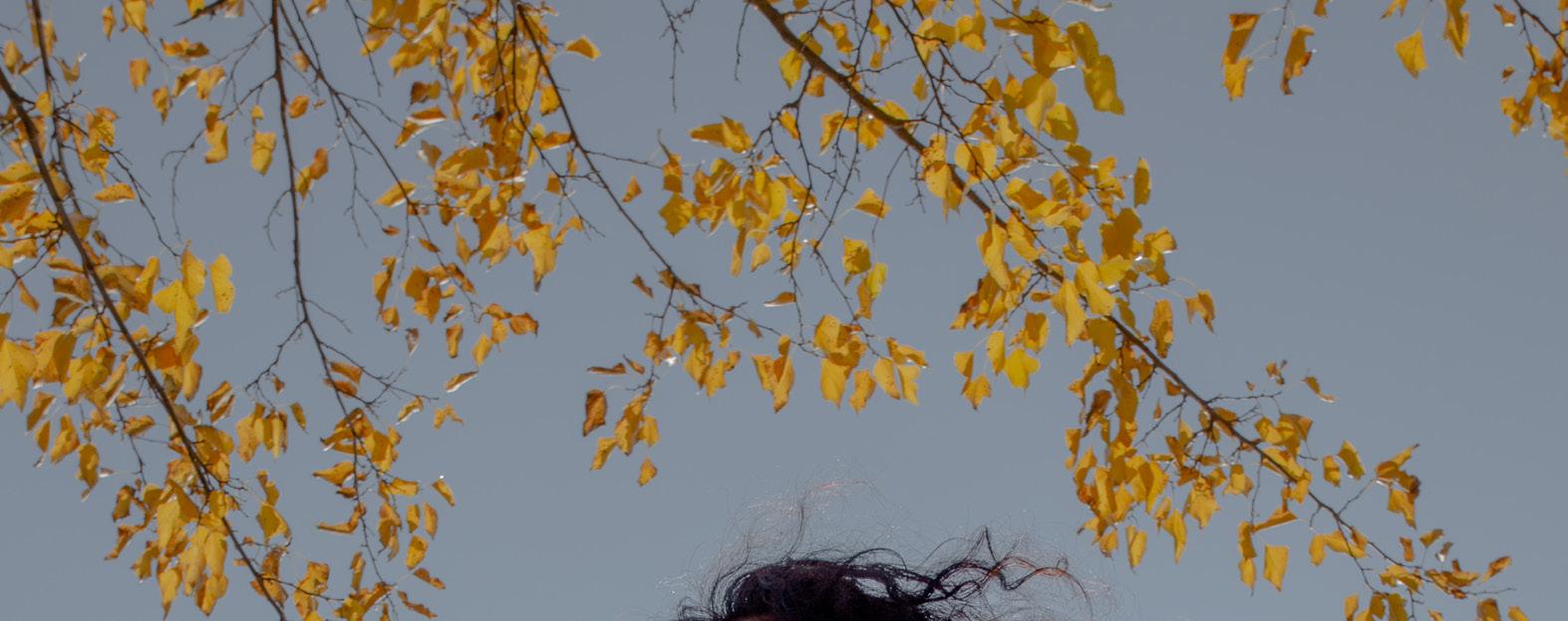



57




59












 Features Editor
Features Editor



























 SHELBY JENKINS GRAPHIC DESIGNER
ANDREW
SHELBY JENKINS GRAPHIC DESIGNER
ANDREW




























 GRAPHIC DESIGNER KAI HUIE
GRAPHIC DESIGNER KAI HUIE










































 LYNN DANG GRAPHIC DESIGNER HANNAH SALAMEH
LYNN DANG GRAPHIC DESIGNER HANNAH SALAMEH


















